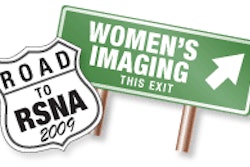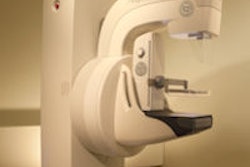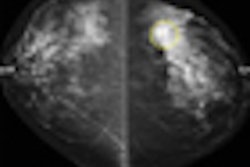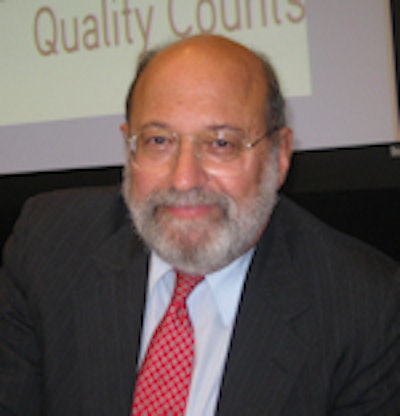
CHICAGO - A panel of breast cancer screening experts today told a special news briefing at the RSNA annual meeting that the new U.S. Preventive Services Task Force (USPSTF) guidelines recommending against routine annual mammograms are flat-out wrong.
RSNA members who peppered the briefing applauded as the University of Cincinnati's Dr. Mary Mahoney, vice-chair of the RSNA Public Information Committee, introduced the panel members, saying "These truly are the experts in mammography. It's unquestionable: Mammography saves lives."
The panel members were expressing their dissatisfaction with the newly revised guidelines from the USPSTF that recommend against routine mammography screening for average-risk women in their 40s. USPSTF also recommends women ages 50 to 74 have mammograms every two years instead of every year.
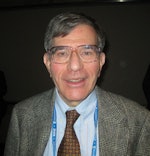 |
| Dr. Stephen Feig, from the University of California, Irvine. |
The breast-screening panel said the guidelines would represent a major setback, wiping out decades of progress.
"Deaths from breast cancer have dropped by 30% since 1990 when mammography screening beginning at age 40 became more widespread," said Dr. Daniel Kopans, professor of radiology at Harvard Medical School.
Kopans said the task force relied on studies with methodology flaws that underestimated the benefits of mammography.
Feig cited several U.S. and international studies that showed the benefits of annual screening beginning at age 40. Among them was a Swedish study showing that annual mammograms reduce breast cancer mortality by 44% among women who are actually screened.
Radiologists said that concerns about the harms of false positives led the Task Force not to recommend screening for younger women.
"You're going to have some false positives, if you detect cancer early," when it is most curable, Feig said.
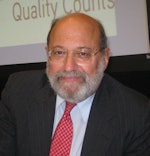 |
| Dr. Daniel Kopans, from Harvard Medical School. |
The breast-screening panel said it supports American Cancer Society (ACS) guidelines, which continue to recommend annual routine mammography screening for all healthy women ages 40 and older.
"Current American Cancer Society guidelines have been shown to save lives," Kopans said. "The Task Force, by its own admission, said women will lose their lives. That doesn't seem to be much of a choice."
Dr. W. Phil Evans, of the University of Texas Southwestern Medical Center, and president of the Society of Breast Imaging, said that the ACS, the American College of Obstetricians and Gynecologists, the Mayo Clinic, the American Society of Breast Disease, and the American College of Radiology are all opposed to the USPSTF guidelines. Only two organizations -- the National Breast Cancer Coalition and the Dr. Susan Love Research Fund -- are in favor of them.
Kopans said he thinks the government panel had "good intentions." Evans agreed, pointing out that 12 of its 16 members had multiple graduate degrees.
However, there were no radiologists on the panel, he said.
Kopans said he tried to e-mail the USPSTF data from several studies showing that mammograms save lives, but as far as he knows, his e-mail was ignored.
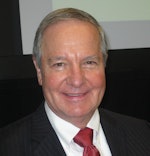 |
| Dr. W. Phil Evans, from the University of Texas Southwestern Medical Center. |
A big worry, the panel agreed, is that the USPSTF's recommendations will be used in any possible health plan being considered in Congress. That, in turn, would lead insurance companies to stop covering annual breast screening beginning at age 40, it said.
In fact, mammograms are cost-effective, Feig said. He presented data showing that a quality year of life saved with mammography costs $17,000. In contrast, a quality year of life saved with dialysis costs $55,000.
At a House Energy and Commerce Subcommittee on Health hearing in Washington, DC, today, Dr. Diana Petitti, vice chair of the USPSTS, said that while no radiologists were on the Task Force, they were "consulted and reviewed the recommendations and provided input."
Petitti told the hearing that their message could have been better communicated, and that it wasn't saying women younger than 50 shouldn't have mammograms, just that for them, the risks of mammography may outweigh the benefits.
Told about the hearing, Kopans said that the average primary care doctor only sees about two breast cancer patients a year.
"They don't know much about breast screening. Women have to be smarter than their doctors and save themselves," he said.
A second congressional hearing on the issue is planned.
By Charlene Laino
AuntMinnie.com contributing writer
December 2, 2009
Related Reading
ACR: Don't add USPSTF guidance to reform, November 24, 2009
Burden of proof: Breast cancer changes fall short, November 23, 2009
Breast guidelines test American tolerance for risk, November 23, 2009
Experts question motives of mammogram guidelines, November 17, 2009
USPSTF ups mammography screening age to 50, November 16, 2009
Copyright © 2009 AuntMinnie.com




